SERVICES
- Cleaning
- Blasting
- Painting
- Coating
- Inspection
| BEFORE |
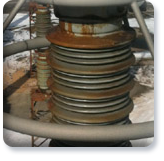 |
"The Art and Science of Energized Insulator Cleaning"
Watch this Video of a Live Demostration
An article published in the Energy Citations Database on 13 May 2001, noted that ten years of tests and studies have proven and they are convinced that insulators can be cleaner safer and more effectively by the energized powder blasting method, more so than any other method of cleaning and maintaining insulators. They also state that regular cleaning of this equipment can prevent power outages by activated contamination, which causes bushing failure and flashover.
| AFTER |
 |
They go on to say that Routine visual inspection and energized insulator cleaning are the best preventive maintenance procedures. Through many years of cleaning insulators, we agree that dry media blasting is, without a doubt, the best method of maintenance on insulators and bushings. We also believe through trial and error, that the type of media used to clean insulators are crucial. Our two basic media’s used for cleaning insulators are, dehydrated pulverized limestone and corncob. Many insulator cleaning companies use different forms of this medium, but we choose to use the two most efficient, safe to our employees, and undamaging to insulators over years of cleaning. Many forms of limestone are very abrasive and damaging to porcelain insulators. They also contain very high concentrates of water. Simply put, we have proven through time testing, they are more damaging and put our employees in a much less safer working environment than we will allow. With over 37 years experience in the business, we pride ourselves as the most effective, reliable and dependable company in the business!
| BEFORE | AFTER |
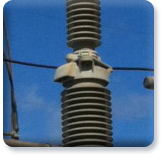 |
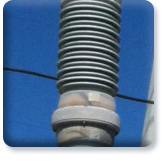 |
| BEFORE | AFTER |
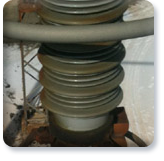 |
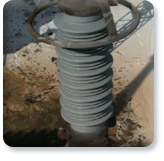 |
| BEFORE | AFTER |
 |
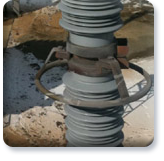 |
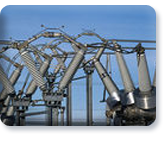
Our method of cleaning insulators follows all guidelines of IEEE Std 957-1995 (Revision of IEEE Std 957-1987), section 5.1.5, compressed air-dry cleaning. Again, we feel this method of cleaning insulators is the most effective method. This method requires an air compressor capable of supplying a minimum of 125 (psi) air pressure, a pressure medium tank, an applicator wand (hot stick), adequate supply hoses and a cleaning compound (medium).
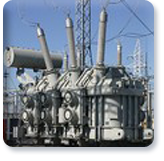 To clean insulators, the cleaning material (Medium) is directed onto the insulator surface through a specialty designed applicator wand (Hot stick). The wand consists of a hot stick/nozzle combination that allows work to be done on energized systems. This method has been used on energized lines and substations through 345kV.
The actual cleaning process for dry cleaners is very similar to sandblasting in that a high-pressure stream of air is used to bombard the surface of the insulator or equipment to be cleaned with the cleaning medium. By choosing the proper medium, virtually any contaminant can be removed from the insulator surface. Caution shall be exercised to prevent glaze erosion or deterioration to the galvanized hardware.
To clean insulators, the cleaning material (Medium) is directed onto the insulator surface through a specialty designed applicator wand (Hot stick). The wand consists of a hot stick/nozzle combination that allows work to be done on energized systems. This method has been used on energized lines and substations through 345kV.
The actual cleaning process for dry cleaners is very similar to sandblasting in that a high-pressure stream of air is used to bombard the surface of the insulator or equipment to be cleaned with the cleaning medium. By choosing the proper medium, virtually any contaminant can be removed from the insulator surface. Caution shall be exercised to prevent glaze erosion or deterioration to the galvanized hardware.
We also specialize in the painting of all substation equipment, to include structural steel on towers or steel crossbars. We are capable of painting Transformers, OCBs, Breakers, Cabinets, Buildings (concrete or metal) and ladders. The majority of substation equipment can be painted while energized, although by industry standard, we must maintain the minimum approach distances required under OSHA regulation when working around exposed energized parts.
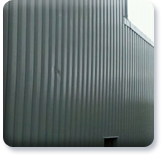
In cases where we have to breach these distances, we will require shutdown periods when working in close proximity to energized parts. These distances are discussed on our safety page under OSHA's “Working around exposed parts.”
| BEFORE | AFTER |
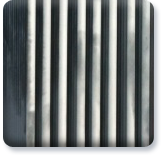 |
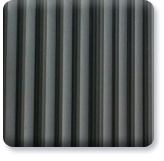 |
| BEFORE | AFTER |
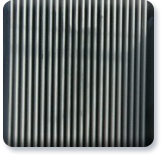 |
 |
| BEFORE | AFTER |
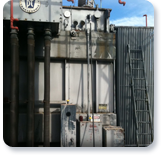 |
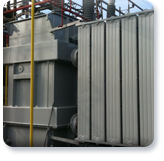 |
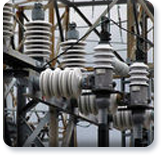
Methods of applying silicone grease compound. As like our cleaning methods, we also use the IEEE Std 957-1995 Annex (Maintenance of Insulators after Cleaning) A.1-Silicone protective coating for high voltage insulators.
Grease like silicone coating compounds have been used successfully as protective coatings of porcelain and glass insulators in electrical maintenance for over 25 years. All forms of present insulator greases prevent formation of a water film because of their water repellent, low surface energy characteristics. Service experience with silicones has shown that when they maintain their water repellency, they provide protection of the insulator by breaking up water filming. However, extended exposure to sparking, ultraviolet radiation, water erosion, or particulate contamination will reduce the water repellency of the grease. When this occurs, leakage currents and dry band discharges may result in decomposition of the grease forming a depressed path in the coating. These paths act as collection sites for moisture, leading to concentrated currents forming arcs. This path or valley can thus lengthen on insulator surface with time. Under high intensity arcs on a relatively thin silicone coat, channeled tracks may develop in the grease, resulting in local hot spots on the insulator surface. If the temperature of the track gets hot enough, the glass or porcelain insulator may fracture.
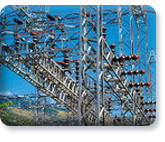 Channeled arcing in a greased polymer insulator may also lead to tracking on the insulator. Therefore, greasing of composite insulators should not be done without first consulting the insulator manufacturer.
The effectiveness of the silicone grease coating is dependent upon the proper thickness and the uniformity. The requirements for protection differ widely according to location and environment, and govern the choice of thickness. This means that each utility may have adopted its own application practices for insulator maintenance. For example, nonabsorbent contaminants, such as metallic particles, require less compound or fluid than an absorbent particle such as fertilizer, if the rate of pollution is similar. For proper applied thick nesses and methods of applying silicone grease, see attached IEEE Std 957-1995, Annex A.1, A.3 (Silicone protective coating for high voltage insulators.
Channeled arcing in a greased polymer insulator may also lead to tracking on the insulator. Therefore, greasing of composite insulators should not be done without first consulting the insulator manufacturer.
The effectiveness of the silicone grease coating is dependent upon the proper thickness and the uniformity. The requirements for protection differ widely according to location and environment, and govern the choice of thickness. This means that each utility may have adopted its own application practices for insulator maintenance. For example, nonabsorbent contaminants, such as metallic particles, require less compound or fluid than an absorbent particle such as fertilizer, if the rate of pollution is similar. For proper applied thick nesses and methods of applying silicone grease, see attached IEEE Std 957-1995, Annex A.1, A.3 (Silicone protective coating for high voltage insulators.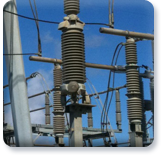
Although our crews constantly watch out for damaged insulators while cleaning them, it is a very good maintenance practice to have your insulators inspected on a routine basis. This can be accomplished while having your insulators cleaned, or as a routine measure. Tests have shown that the insulation strength of an insulator string with broken skirts is reduced. Broken units may have lost up to 70% of their withstand capacity. Because the insulating capability of a broken unit cannot be determined without testing it, damaged units in an insulator are usually considered to have no insulating value. Additionally, the overall insulating strength of a string with broken units may be further reduced in the presence of a live-line tool alongside it. The number of good units that must be present in a string is based on the maximum overvoltage possible at the worksite.
 Since the business started, we have had many of the same customers for over 35 years. These customers include, steel mills, cement plants, utility companies, limestone plants, etc. Many of these plant environments get very dirty on a daily basis, and without routine insulator cleaning, can go down at a moments notice. Although much of our work is repeat business, customers often call us because of emergency situations that arise due to the lack of maintenance shortfalls on their part.
Since the business started, we have had many of the same customers for over 35 years. These customers include, steel mills, cement plants, utility companies, limestone plants, etc. Many of these plant environments get very dirty on a daily basis, and without routine insulator cleaning, can go down at a moments notice. Although much of our work is repeat business, customers often call us because of emergency situations that arise due to the lack of maintenance shortfalls on their part.
